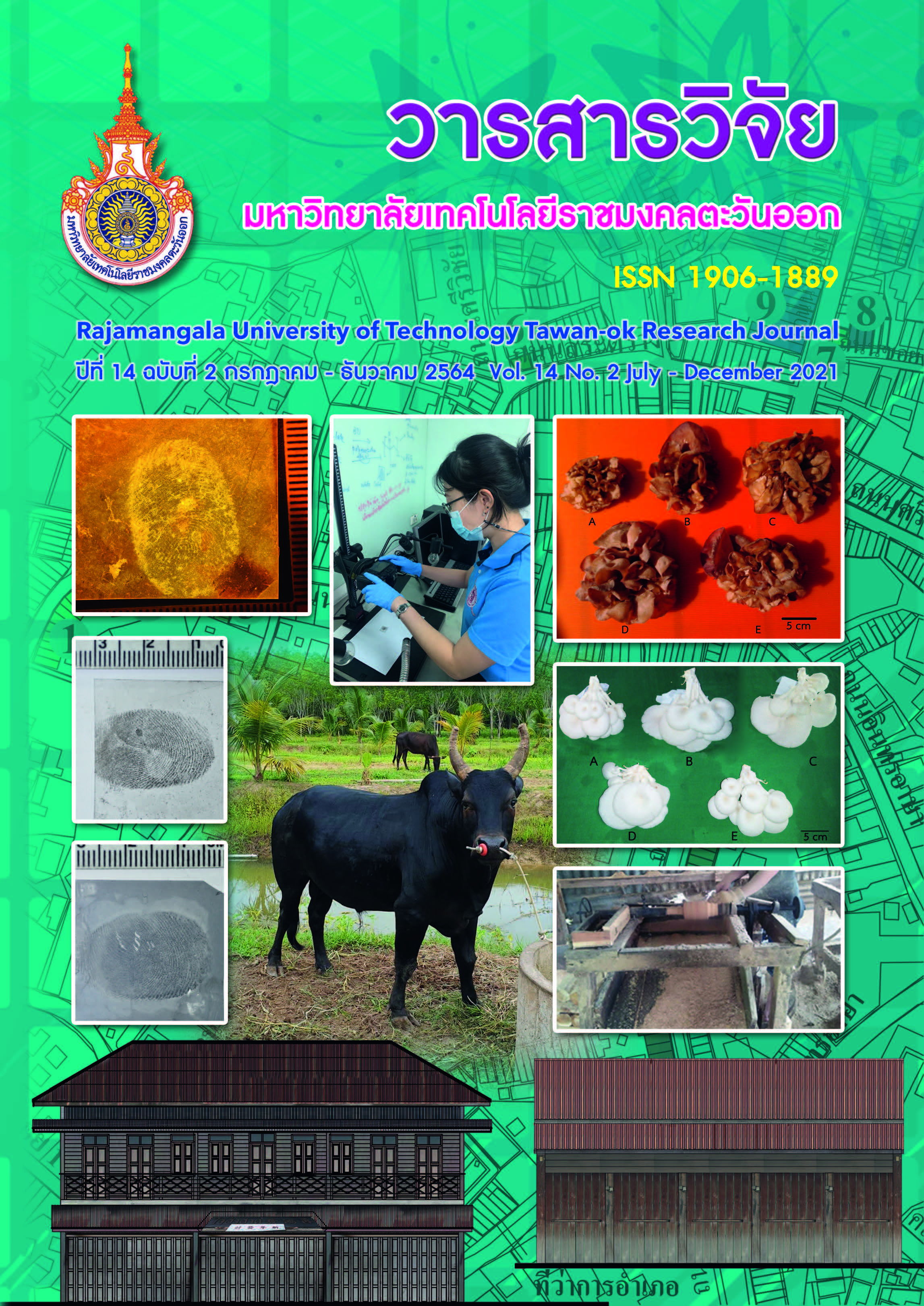Utilization of Fruit Orchard Waste: Durian and Mangosteen for Charcoal Briquette Production
Main Article Content
Abstract
The production of pressed charcoal from the orchard waste: durian and mangosteen, was
obtained from the utilization of agricultural waste. In the orchard, the waste consists of large
branches, small branches; bad quality fruit leaves resulting from fruit pruning in each production
season which is found in orchards. This research studied the production of briquette charcoal from
waste from fruit orchard with the ratio of raw materials 1:1:1:1 including large branches, small
branches, leaves, and fruit. They were mixed with binders at the ratio of 8:2 and 7:3 by weight. There
were 2 types of binders including cassava flour and molasses in producing briquette charcoal. The
properties of briquette were analyzed according to ASTM to be in accordance with Thai community
Product Standard. The results show that the charcoal from the orchard, durian and mangosteen had
calorific value which was higher than Thai Community Product Standard which stated that charcoal
briquette shall bot have less calorific value lower than 5,000 calories per gram. The results of in the ratio of 8:2 was 6 baht per kilogram and the payback period is approximately 0.42 years. The
results of the study can be used to encourage farmers to use agricultural waste such as twigs, leaves
and fruit that is wastes in the area to be used to increase value.
economics analysis found that the production cost of the charcoal briquette with molasses as binders
Article Details

This work is licensed under a Creative Commons Attribution-NonCommercial-NoDerivatives 4.0 International License.
References
American Standard of Testing Material. 1999. Proximate Analysis of Coal and Coke. American Society for Testing and Materials, U.S.A.
Asawaruchikulchai. 2011. Utilization of durian peel and mangosteen peel in the form of briquette fuel. Mahidol University, Nakhon Pathom. (in Thai)
Bhattachary and Ram M. Shrestha. 1990. Biocoal: Technology and Economics. Asian Institute of Technology. Division of Energy Technology; Regional Energy Resources Information Center,1990.
Botany. 2004. Role of Yeast in Production of Alcoholic Beverage. Accessed 13 July 2004. Available from http://www.botany.hawaii.edu.
Bussarakhamwadi. 2004. Properties of Charcoal Briquettes from Cassava Rhizome with Reference to Raw Material Sources, Powder Sizes, and Intermediate Ratio. Kasetsart University. Bang Khen Campus, Bangkok. (in Thai)
Coal & Coke testing. 2013. Inspectorate Hellas-Laboratory. Source: http://www.inspectorate.gr/test_bv/common/docs/InspectorateCoalTesting.pdf. September 29, 2013.
D-Lab Charcoal Process at MIT. 2010. Fuel from the Fields Charcoal. Massachusetts institute of Technology. Everett M. Rogers. 1995. DIFFUSION OF INNOVATIONS. (4th Ed.). New York: Free Press.
Ganesan and B.P. Nema. 2006. Charcoal making from agricultural residues. Central Institute of Agricultural Engineering Berasia Road, Bhopal-462038, India.
Isarangkun. 2012. Economic Value Analysis. National Institute of Development Administration. Bangkok. (in Thai)
Ministry of Energy. 2011. Project to promote the production and use of combined heat energy from biomass in the industrial sector. Source: http://webkc.dede.go.th/testmax/node/194,15 September 2013.
Thai Industrial Standards Institute. 2004. Community Product Standards. Charcoal briquettes.Source: http://tcps.tisi.go.th/pub/tcps238_47.pdf, 18 August 2013.
Yachansuek. 2005. Analysis of cost and financial returns of establishing a charcoal briquette production business from coconut shell in San Sai District Chiang Mai Province. Chiang Mai University, Chiang Mai. (in Thai)


